Amsterdam, The Netherlands
< Start at the beginning of this series: Grand European River Cruise
The end of our cruise is near! I’ll share one last blog post as soon as it’s ready – Grand European Finale. That post will review our itinerary and provide links to each post in the series. I’ll share some of our recommendations for must-sees and, since hindsight is 20/20, I’ll share some tips and regrets.
Early this morning we disembarked the Skadi for the last time. The ship we called home for over two weeks was very clean, compact and comfortable – just the way we like it. We have two more nights in Amsterdam (which were not nearly enough). Jim and I signed up for a “post” extension through Viking, and my brother decided to book his extension on his own. He was very excited about getting a cheaper room in the red light district.
While a taxi transported Tom to his hotel, Jim and I were transported to the gorgeous Hotel Okura Amsterdam. It was just before 9am and we were able to check in – unlike many of our previous shipmates. With a fabulous lobby, super comfy beds, an extensive selection on our included breakfast and just a short walk to the tram (if you get off at the right stop), these were wonderful accommodations for the end of this absolutely fabulous trip.
Shortly after check-in, we were whisked away for our two-hour, nearly two-mile walking tour of the beautiful city of Amsterdam. It was a nice tour on centuries-old cobblestones (treacherous at times), that ended at Museum Square – leaving the rest of the afternoon free for exploration.
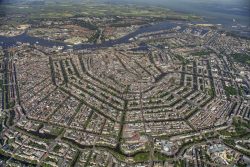
Photo by Peter Elenbaas at iamsterdam.com
Our tour included information about the canals and their relationship to the expansion of the city over its many years. With each ring of expansion, more modern buildings and homes were added, so the oldest part of the city is the area closest to the top of the “horseshoe” along the River IJ (pronounced ‘eye‘). Along with more building space, the canals provided protection from the outside world – so most of those older homes and buildings are originals. Amsterdam was added to UNESCO’s World Heritage List in 2010.
“Seventeenth-Century Canal Ring Area of Amsterdam inside the Singelgracht. The historic urban ensemble of the canal district of Amsterdam was a project for a new ‘port city’ built at the end of the 16th and beginning of the 17th centuries. It comprises a network of canals to the west and south of the historic old town and the medieval port that encircled the old town and was accompanied by the repositioning inland of the city’s fortified boundaries, the Singelgracht. This was a long-term programme that involved extending the city by draining the swampland, using a system of canals in concentric arcs and filling in the intermediate spaces. These spaces allowed the development of a homogeneous urban ensemble including gabled houses and numerous monuments. This urban extension was the largest and most homogeneous of its time. It was a model of large-scale town planning, and served as a reference throughout the world until the 19th century.” – READ MORE from the UNESCO World Heritage site
“City of charming canals, elegant gabled houses, splendid museums and abundant bicycles, the Dutch capital of Amsterdam is a delight to explore. Its patchwork of waterways forms about 90 islands connected by 1,500 bridges. The legacy of the Dutch Golden Age lives on in gilded manses (homes) and in the lush paintings of Rembrandt and other Dutch masters that adorn the Rijksmuseum, The Netherland’s grand repository of art and cultural history.” – from our Viking information
An abundance of bicycles is right! I’m not sure how everyone kept track of their own bicycle, and when we looked closely, nobody had a brand-new, fancy, late-model bike. Most were older and not worthy of stealing! Our guide made us very aware of the lines painted on the streets, since pedestrians were competing with bicycles, scooters, cars and trams! It’s important to know who has the right-of-way, although it’s also important to know that you can’t take those rules too seriously since folks don’t always follow them. So, when you leave the sidewalk – make sure you know if anyone – or anything – is coming your way!
On our next visit, we are definitely stopping for a Heineken tour! See what I mean? Not nearly enough time here!
“THE STORY OF THE WORLD’S MOST FAMOUS BEER. Welcome to the home of Heineken®! Book a tour to discover how a small Amsterdam brewery went on to become the world’s favourite beer. From our heritage and brewing process, to our sponsorships and what it takes to serve a star. Ending in style: with a beer… or 2!” – READ MORE
What a beautiful day in a beautiful city! The photo of the large building across the canal is the Rijksmuseum, which we’ll pass through in the next grouping of photos.
Below are closer-up photos of the Rijksmuseum. Although we weren’t able to visit the inside to see Rembrandts and other Dutch masters’ historical paintings, we walked through its absolutely fabulous building and admired its ceiling arches and stained glass. As we emerged onto the Museum Square and turned around, we got another great view.
Also on the Museumplein are several other museums which can be a highlight of any visit to Amsterdam. At the Van Gogh Museum you can explore Vincent van Gogh’s famous paintings and drawings, and the works of his friends and contemporaries, and also discover a fine collection of French and Japanese prints.
Once our tour guide departed, most of our group visited the museums. Instead we grabbed lunch at an outdoor stand and took a much needed break after the long walk. We then set out to meet up with my brother a little closer to his hotel. As it turned out, it was a lot further than we thought. We did a lot of walking and not a lot of time seeing the sights, although most were scenic routes so that counts for something.
We finally arrived at Dam Square – the historic center of Amsterdam and where Tom was waiting. Today there was a large gathering of folks – some sort of protest – which is common on the square. The National Monument was built in 1956 to honor the casualties of World War II, and in May of each year a ceremony is held to remember all who were lost. Since my photos aren’t the best, visit the link for some better ones. There are more statues near the monument that were pretty cool and each has their own story.
On an earlier tour we passed by The National Monument and our guide laughed and said he wasn’t surprised by the shape of the monument – given its proximity to the red light district.
After meeting up with my brother he grabbed some lunch and we walked around a bit. He expressed some concern that his hotel may not be the greatest, but we parted ways and he made his way back to get checked in. We hopped on a tram to save us some steps back to our hotel. Another option to deciphering the tram system would have been:
“Most of Amsterdam’s major museums and attractions are located right on the water (or very close by), so you can see all of the big ones from the comfort of a Canal Bus. With stops right outside the Rijksmuseum, Anne Frank House, Westerkerk, Central Station, NEMO Science Museum, the Maritime Museum, the Hermitage and the Heineken Experience, plus many more within walking distance, the hop on, hop off Canal Bus is by far the easiest way to take in the best sights of Amsterdam. Bon voyage!” – READ MORE
We arrived back at our hotel for a break while waiting to hear from Tom about where we would meet up later. When we did hear from him, he shared that his room was tiny, scary and hot (no air-conditioning), and his decision to save money was immediately met with regret. Luckily there was one room left at the Okura, and he was able to grab it.
So, after paying for a taxi to his hotel, he had to pay for another to the Okura. After paying for his room, he had to pay for another at the Okura, and his breakfast was not free – and definitely not cheap. And even though our Viking airport shuttle was obviously going to the airport (and even at his designated time) they weren’t going to just let him hitch a ride for free. By the end he was on a first-name basis with his taxi driver, and quite sure booking on his own did NOT save money this time! Lesson learned… sometimes the convenience of having someone else handle all the travel details is well worth it.
The views from our room were probably not as “interesting” as the views in the red light district, but we were okay with that.
That evening we took another tram ride to Central Station, where we finally located the SECOND of two LOVERS Canal Cruises docks (unbeknownst to us) for our evening entertainment – a boat ride through the canals of Amsterdam. Even though it wasn’t very dark at the time our tour left – not quite the ambiance that the website portrays – it was an enjoyable trip. Central Station was awesome and could have been a day trip in itself.
“Amsterdam Central Station main train station is the real heart of the city: central not only by the name, but also as the biggest public transport transfer spot, serving not only visitors to Amsterdam, but also city inhabitants. Every day 250,000 people go through the Amsterdam Central Station.
Final stops of several lines of city trams and buses are here, as well as waterfront stations of city ferry lines taking cars and passengers to Amsterdam North (Amsterdam Noord). It is also here, that a main Amsterdam Tourist Office is based, as well as departure quays for the tourist boats cruising around the city canals.” – READ MORE
My view from the boat was not conducive to taking photos, so I just relaxed and enjoyed the ride. Our tour guide was quite entertaining, with a great sense of humor and extensive knowledge of the city. As we passed through the red light district, she made sure that folks with cameras did not take photos of the ladies of the evening, since they are just earning a living and should be respected. Our driver was very good at maneuvering, especially since occasionally we’d pass by houseboats that were permanently docked along the canal.
“Amsterdammers are known for rarely drawing their blinds, making it difficult to resist peering into their immaculately styled abodes as you explore the city. This curtain aversion extends to homes on the water, meaning that you can get a rare insight into life on a houseboat as you sail by on a Canal Bus. The Dutch are generally a friendly sort so give residents a wave and a ‘goedemiddag’ as you pass, but don’t forget your manners. It’s rude to stare – even in Amsterdam!” – READ MORE
It was a great evening, and with each trip out, we got a little better at figuring out the tram stops. Since we are now experts, that’s another good reason to go back before we forget our skills!
Of course, no trip to Amsterdam is complete without a tour of the Anne Frank House. Months before our trip we decided on a “Jewish Quarter Anne Frank Walking Tour” through Viator, and scheduled it for this afternoon. Be careful if you book this tour, because this tour ENDS at the Anne Frank House but tickets to get INTO the house are NOT included. You must go on the website at annefrank.org to purchase your tickets – and do it EARLY! We scheduled our tickets for about 1/2 hour after the tour was to end, so just in case it went long, we would not lose our place. As it turned out, we ended up getting into a slightly earlier tour instead.
Another tram dropped us in the Jewish Quarter, near the Jewish Historical Museum where we were to meet our tour group. We arrived a little early and were able to look around a bit. Since it was Sunday afternoon, partitioners at the Moses and Aaron Church were long gone and this area was pretty deserted. With the presence of many tagged-up food trucks at the ready, it must be bustling other days of the week.
On the tour we learned more about Amsterdam’s troubled past, with regard to the Nazi occupation of the Netherlands between 1940 and 1945. The effects of the brutal regime affected not only the Jewish community, but also the everyday lives of all those living in Amsterdam.
The gentleman in the statue in the first photo below is called De Dockworker. This statue was erected after the 1941 February Strike – a mass Dutch strike against Nazi abuses of Jews in German-occupied Netherlands. By the second day, 300,000 people joined in, but by the third it was harshly suppressed. Although unsuccessful, it was considered the first public protest against the Nazis in occupied Europe, and the only mass protest to be organized by non-Jews. For more information about the events leading up to- and after the Strike, visit the link.
Brass bricks known as Stolperstein, or “stumbling stones,” commemorate millions of victims of the Nazi regime. Below are stones in front of a house where two members of a family were forcibly removed by the Nazis. Be sure to click on the link above to read the story of how Guenther Demnig is working to change how the Holocaust is publicly remembered in Germany. To date there are more than 30,000 commemorative bricks in dozens of cities and towns across Germany.
We first noticed these stones in Regensburg, Germany, where our tour guide told us of their significance. It was very moving to see the stones and then be aware of them in front of so many houses throughout the rest of that morning – and the rest of our trip.
The Auschwitz Monument is located in Wertheimpark and was also a moving experience. Remembrance stones may be placed on top of the thick glass panel which reads “Nooit meer Auschwitz” and translates to “Never again Auschwitz”.
“This monument was created by Dutch writer and artist Jan Wolkers, in memory of the many victims of Auschwitz. The monument is made up of broken mirrors and can be found in the Wertheimpark. According to Wolkers, the mirrors represent the thought that “heaven is no longer unbroken since Auschwitz”. A memorial service held at the moment every year on the last Sunday in January.” – READ MORE
After our first tour this afternoon, we met our second tour with much anticipation. An audio tour was available and we were able to hear excerpts from Anne’s diary in a young girl’s voice. It was so incredibly moving to hear the story while walking through the house where it all took place. This is one tour I will never forget.
“The Diary of a Young Girl, also known as The Diary of Anne Frank, is a book of the writings from the Dutch language diary kept by Anne Frank while she was in hiding for two years with her family during the Nazi occupation of the Netherlands. The family was apprehended in 1944, and Anne Frank died of typhus in the Bergen-Belsen concentration camp in 1945. The diary was retrieved by Miep Gies, who gave it to Anne’s father, Otto Frank, the family’s only known survivor, just after the war was over. The diary has since been published in more than 60 languages.” – READ MORE
After that emotional visit, we worked our way back to our hotel via another scenic route past Westerkerk Church which was built between 1620 and 1631. Standing at nearly 280 feet, ‘Ouwe Wester’ is Amsterdam’s highest church tower. The steeple with its imperial crown was built in 1638 and the carillon can be heard several times a day. Leading up to each service, the bells are rung by hand by a group of volunteers from the congregation.
We finished off our stay in Amsterdam with a (huge) fish fry at a pub on a corner. A sandwich board advertising their fish fry was all it took to lure us in for another break and another (huge) beer. What a fabulous day. I wish we had a couple more to immerse ourselves in the culture and visit a “coffee shop”. Pack it up Olsons. Tomorrow we head home. Dammit.
Up Next: Grand European Finale
Happy trails,
Barb

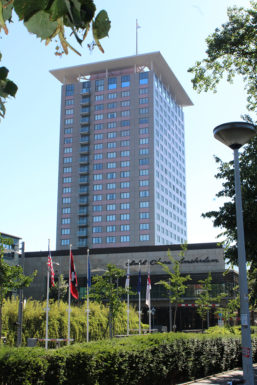
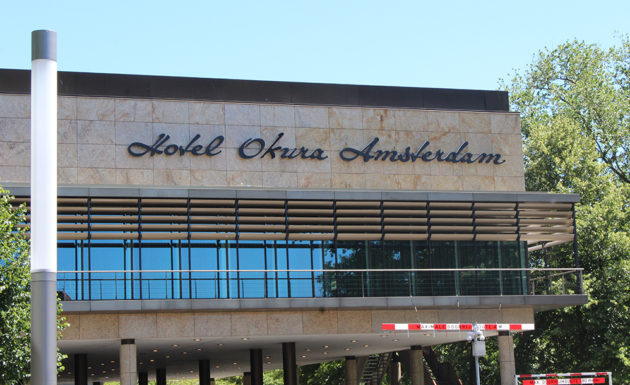
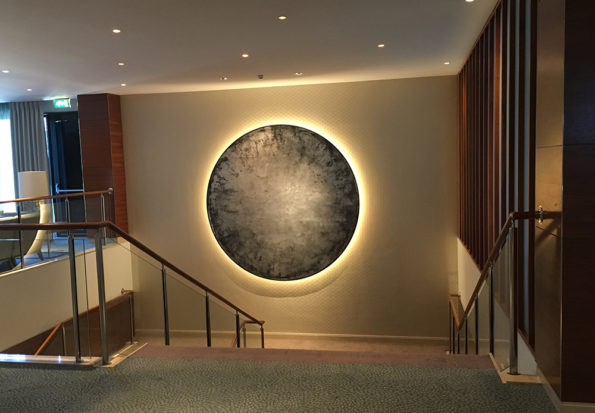
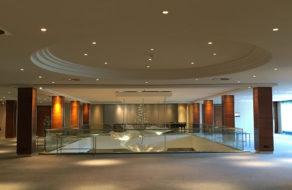
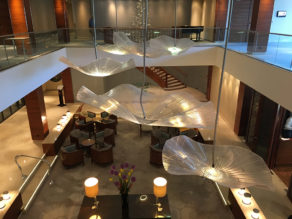
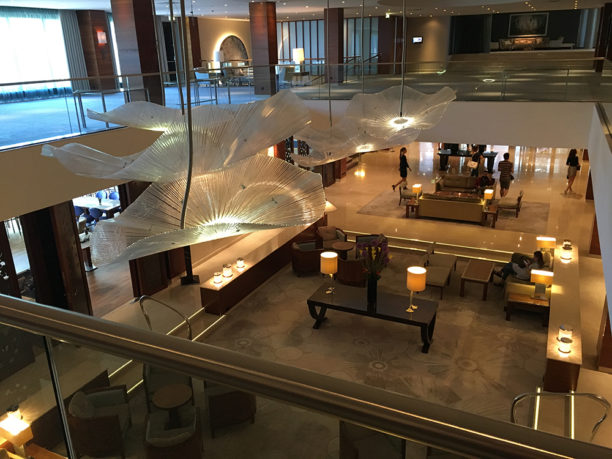
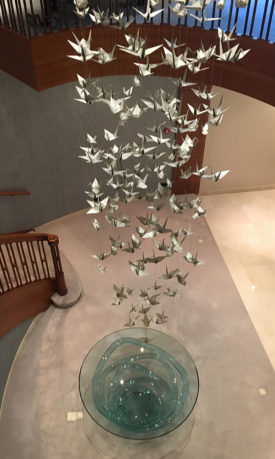

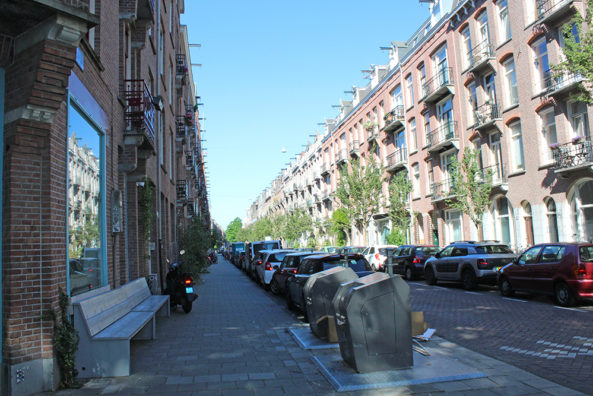

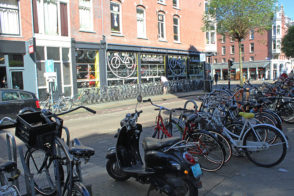

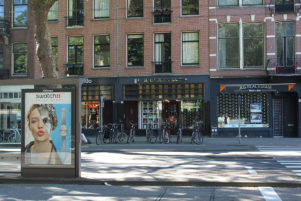
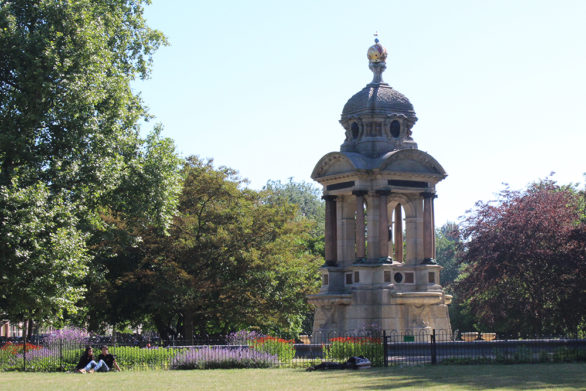

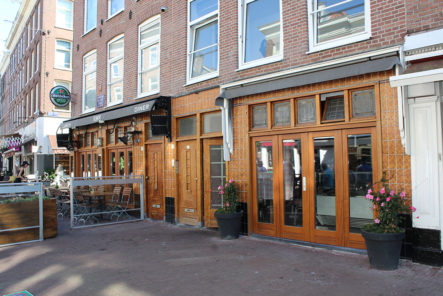
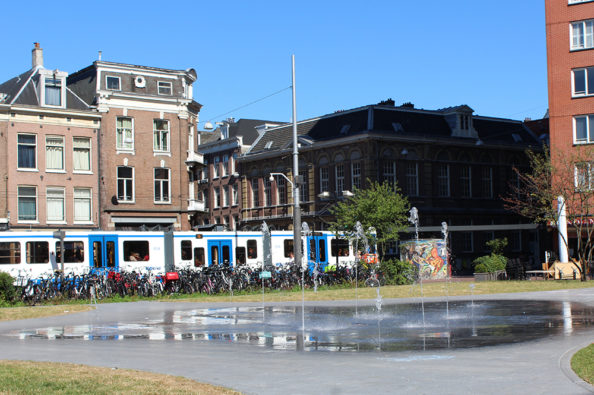
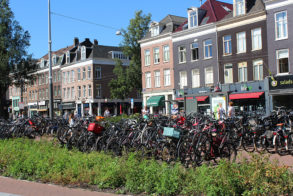
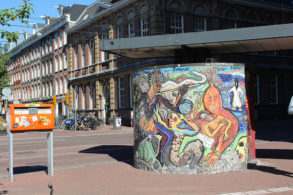
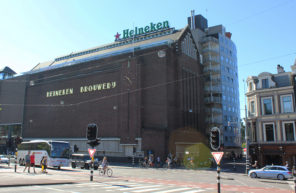

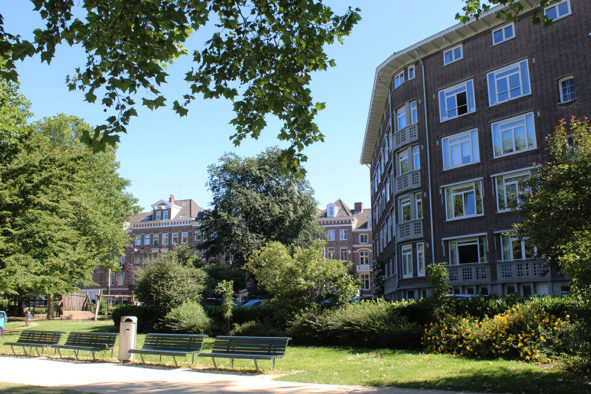




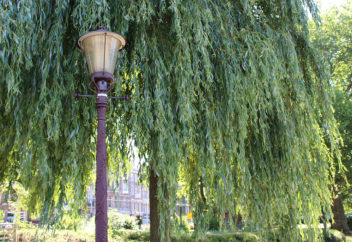
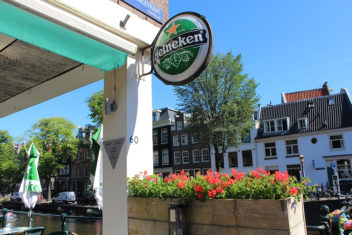
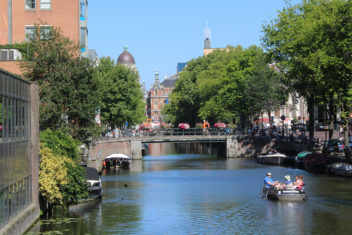
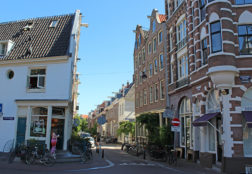
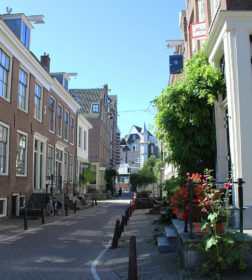
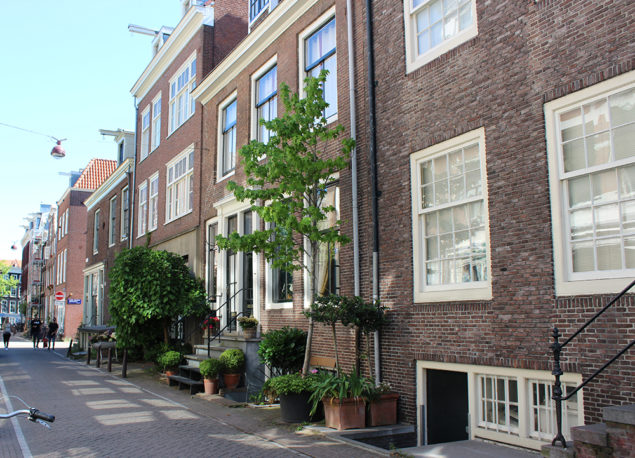

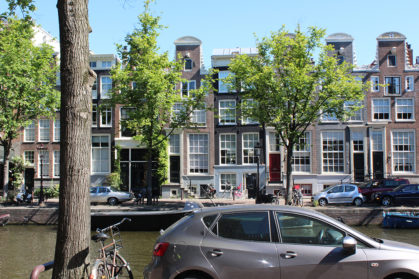

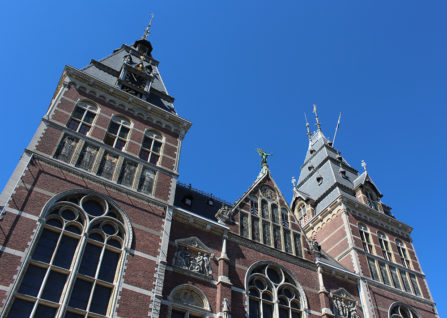
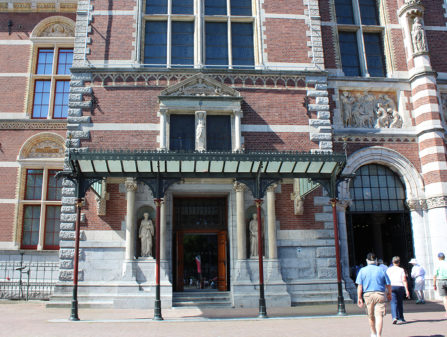
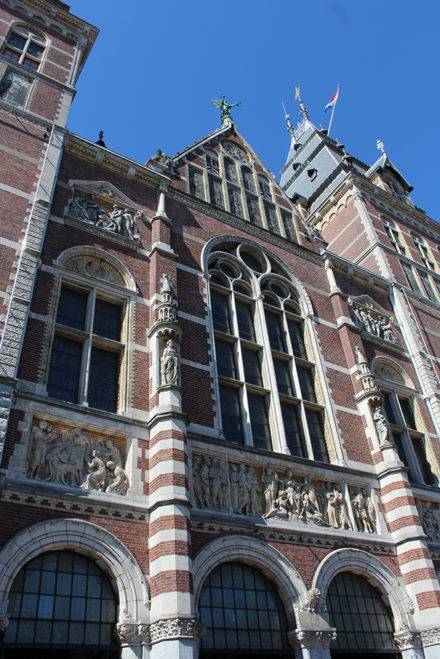
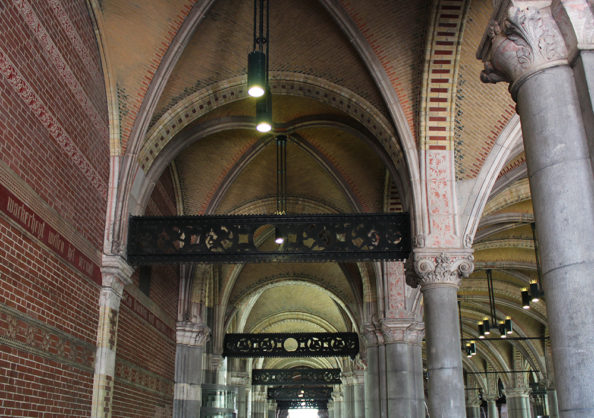

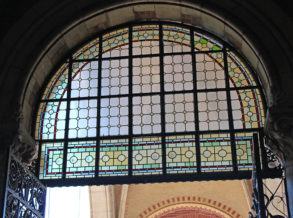
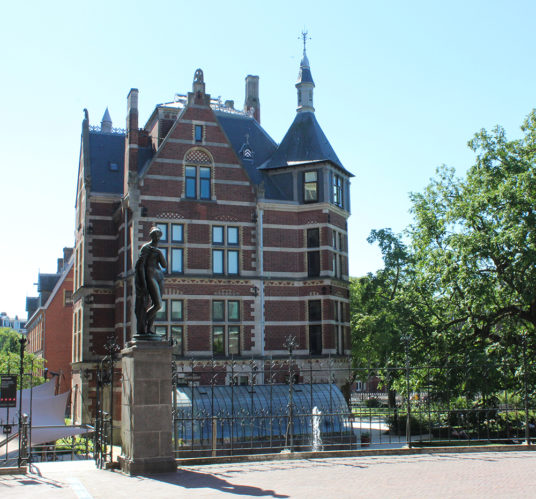
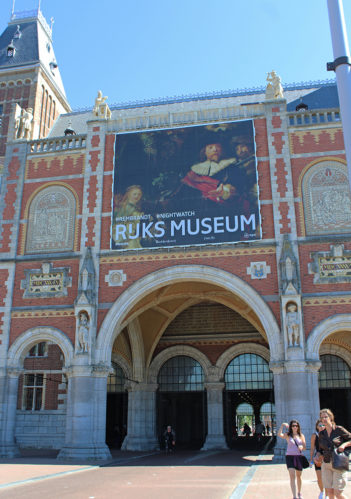
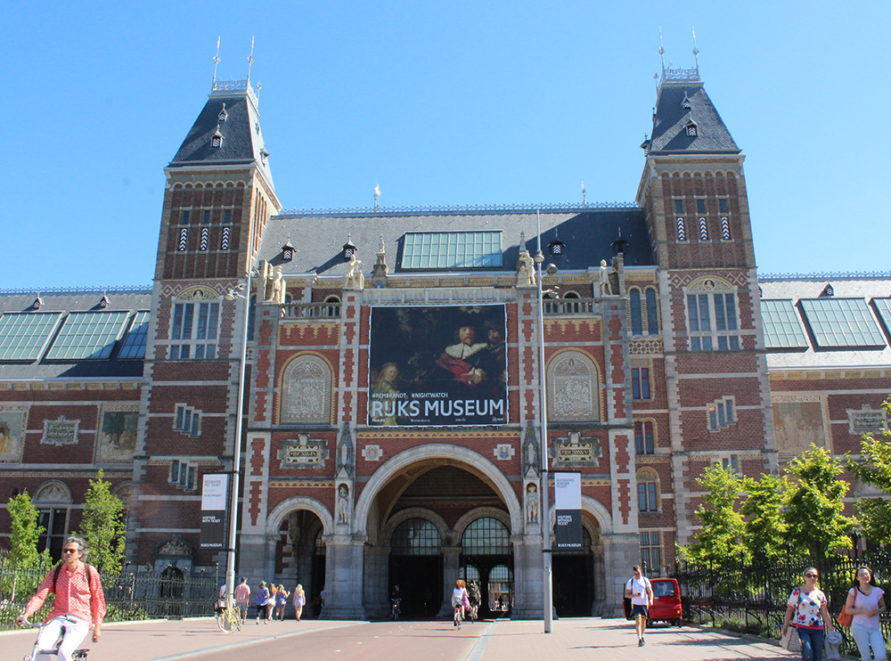


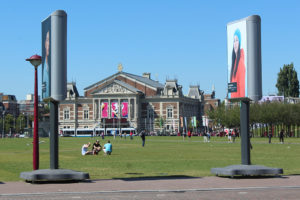

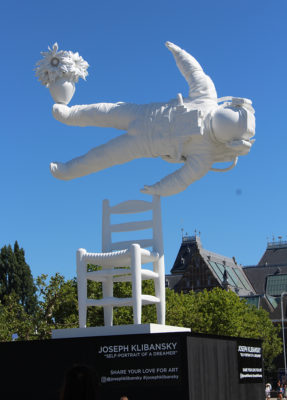
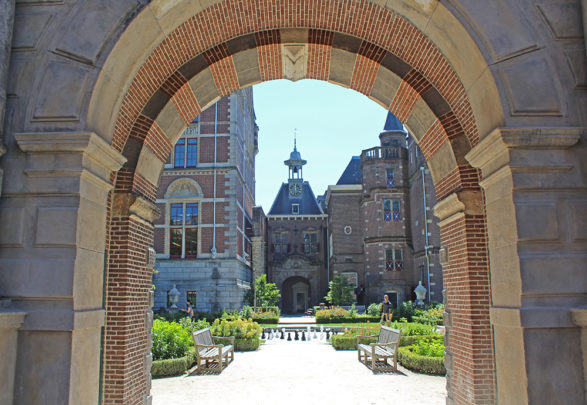
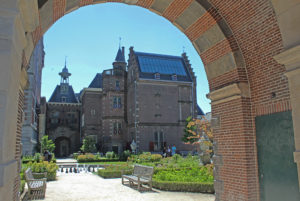
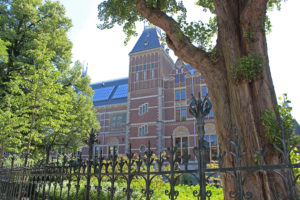


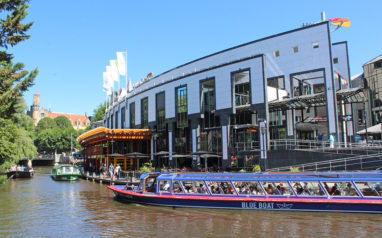
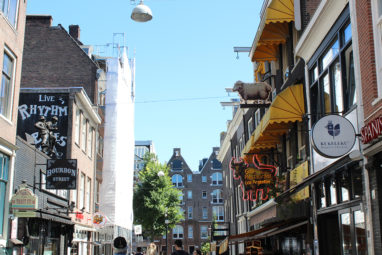
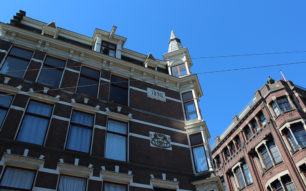
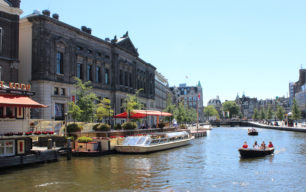
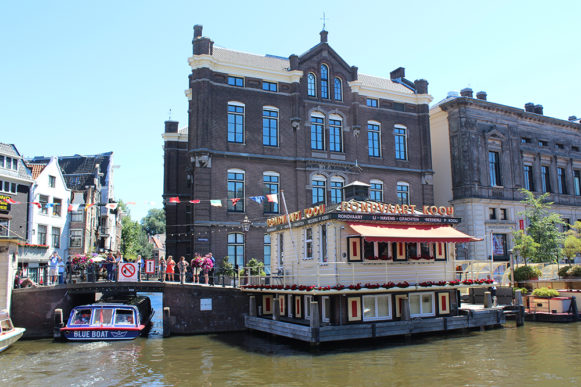
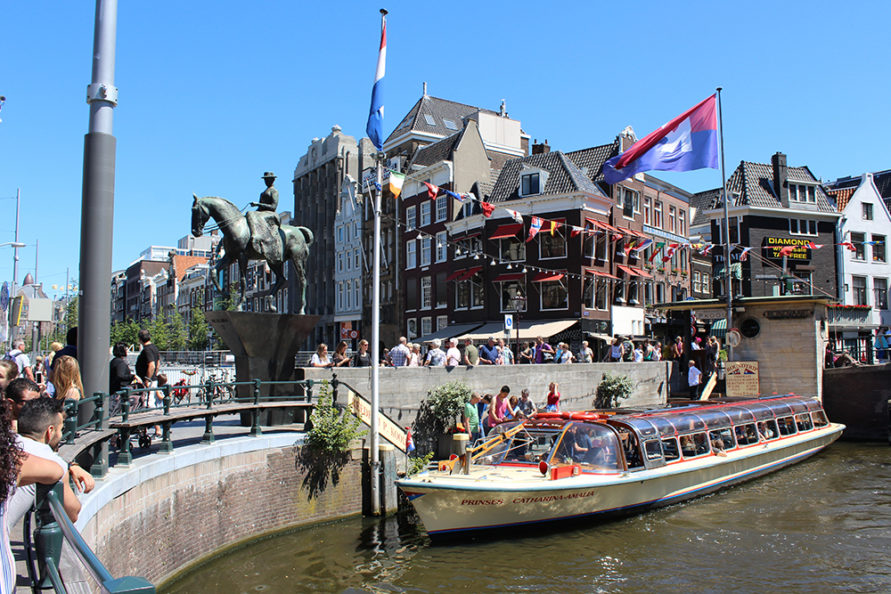
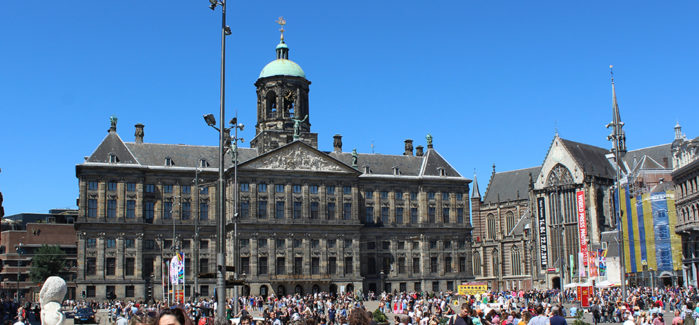
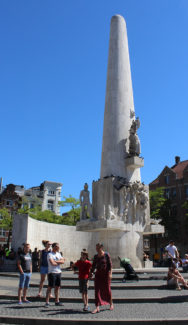
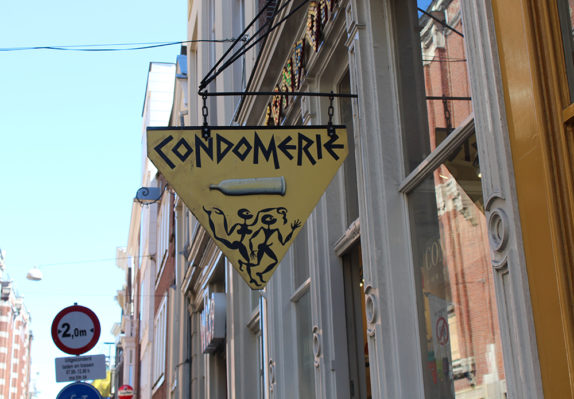

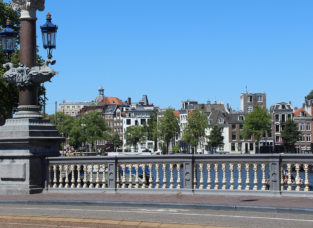
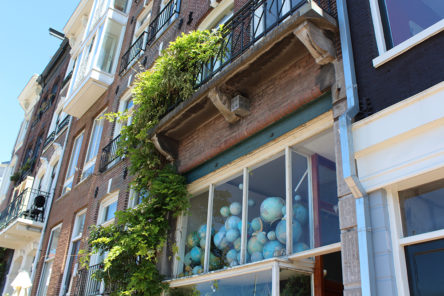

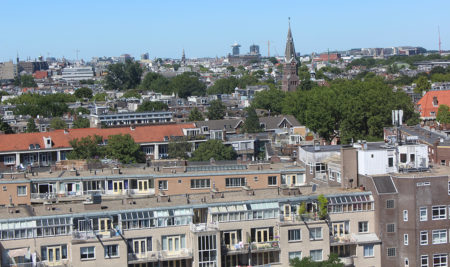
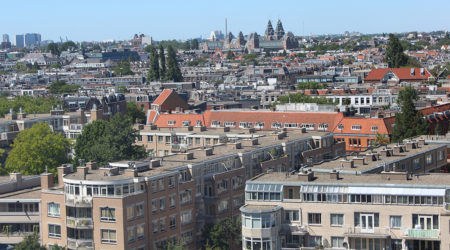

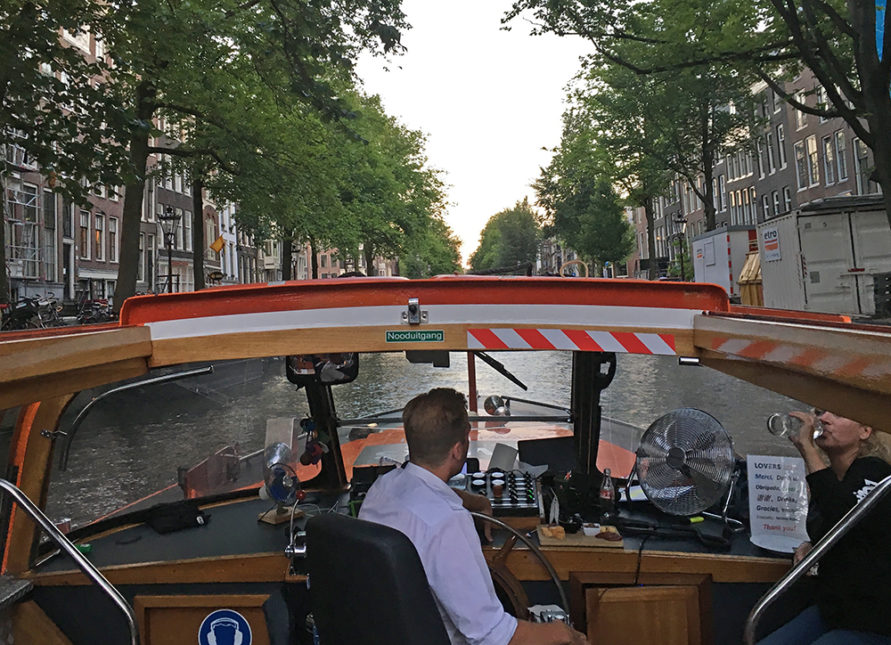

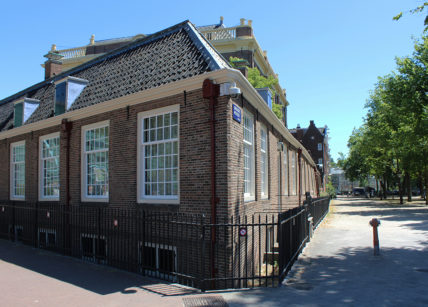
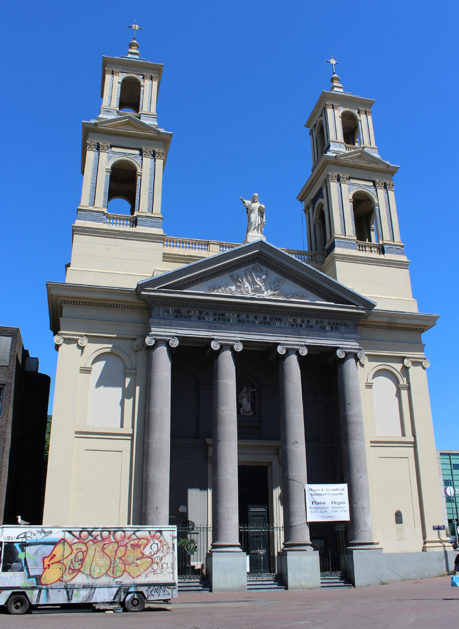
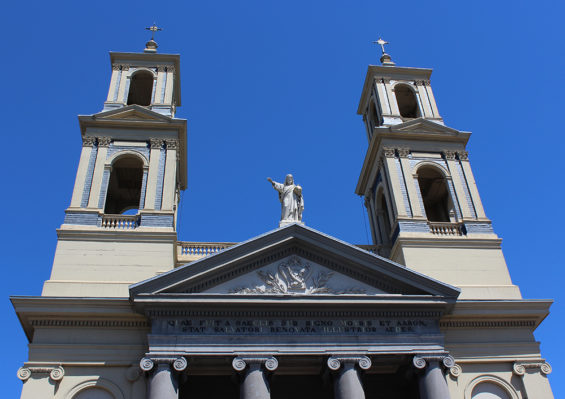
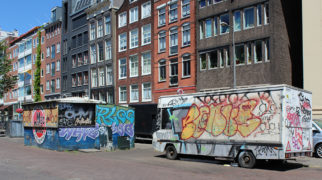

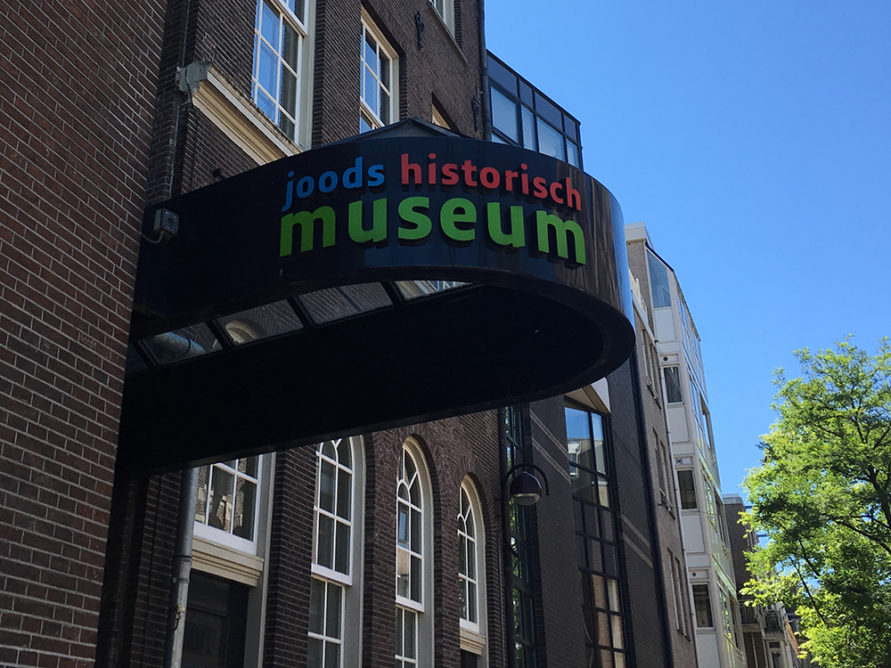
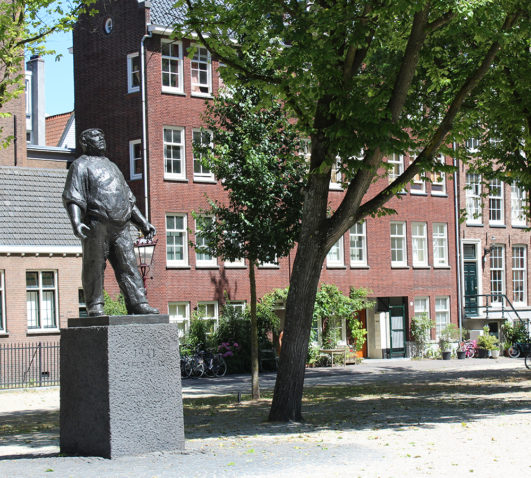
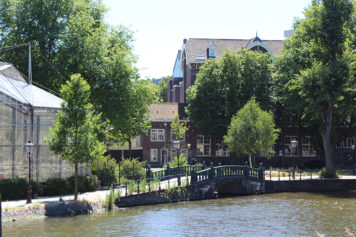
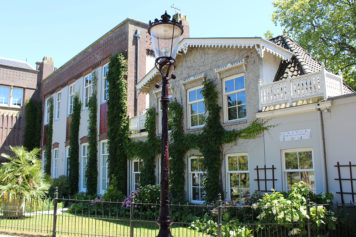
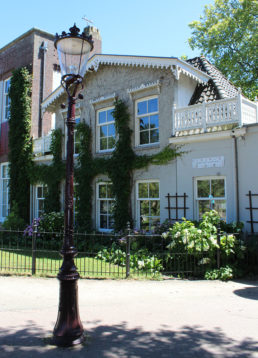

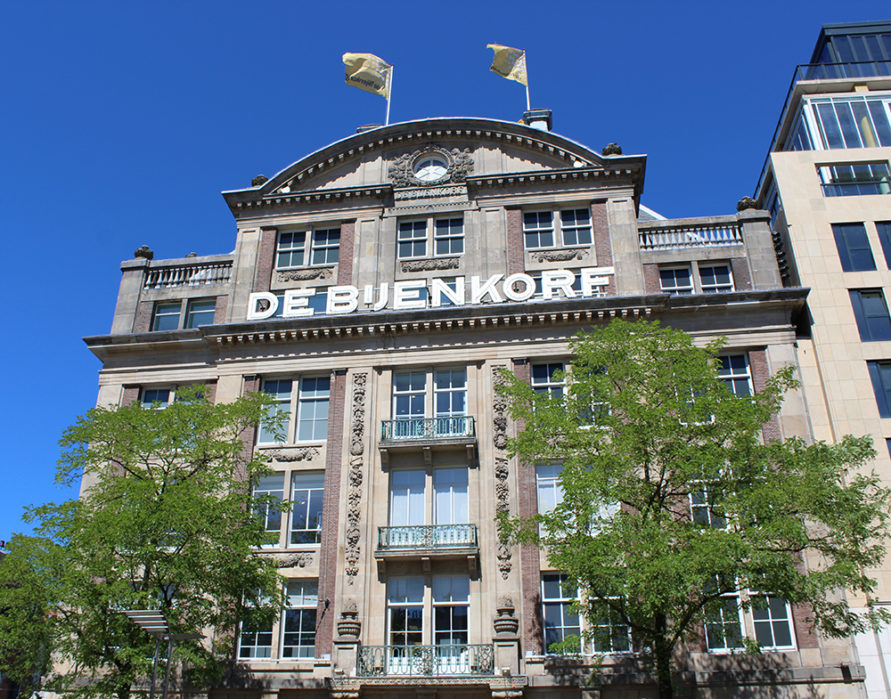
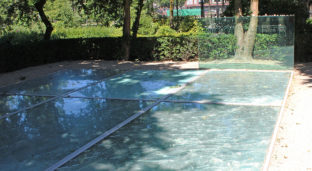
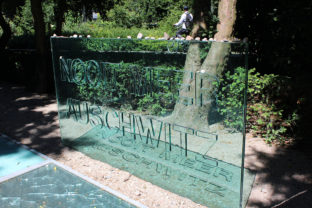

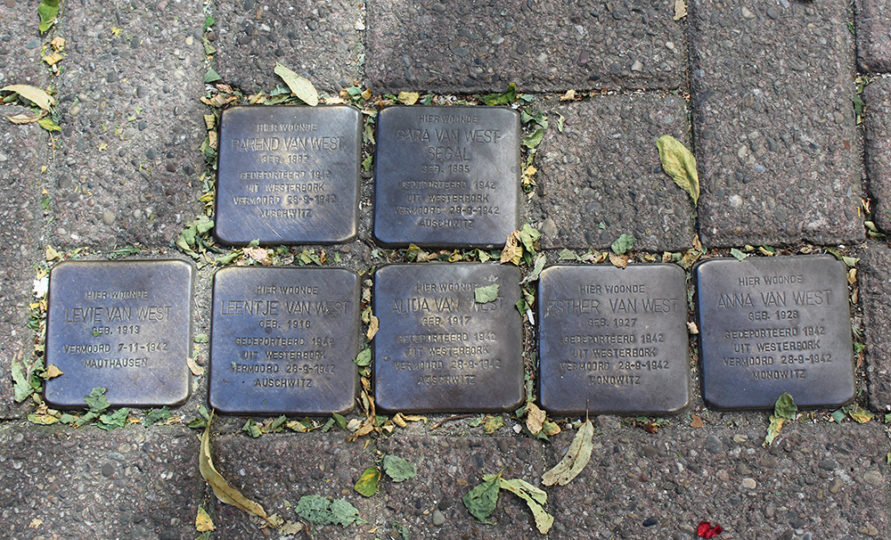
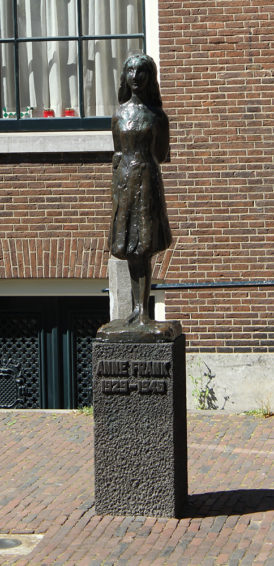
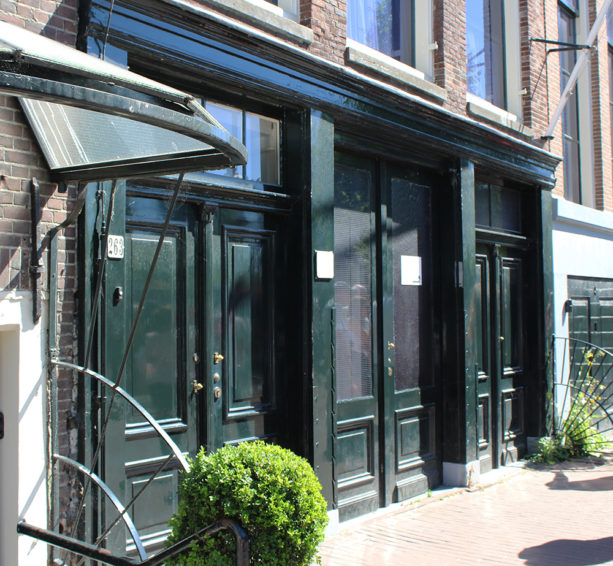

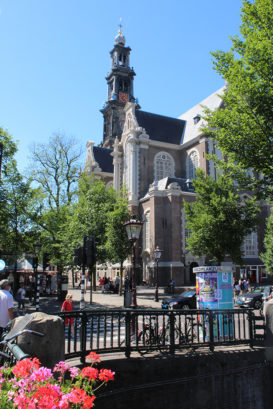
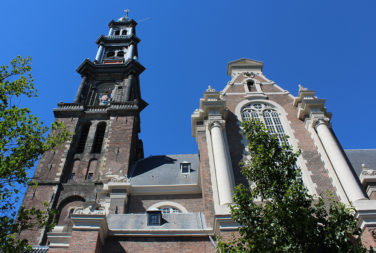
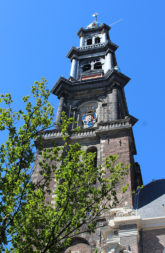
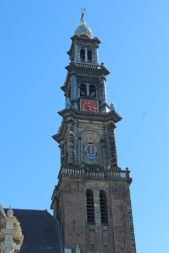
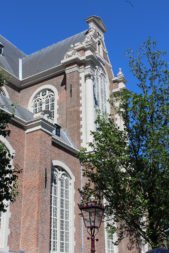
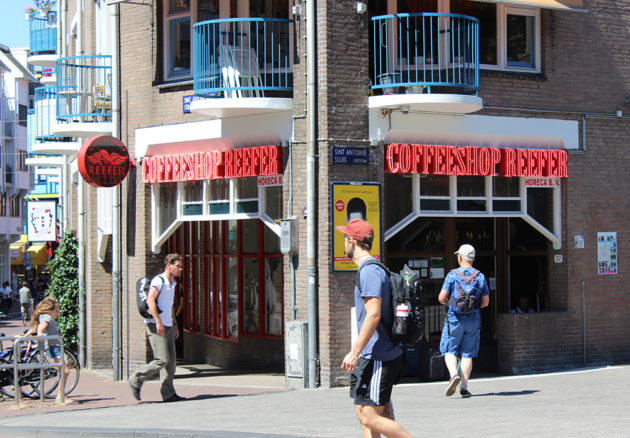

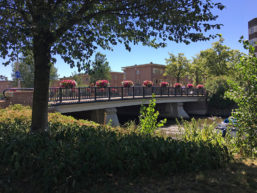

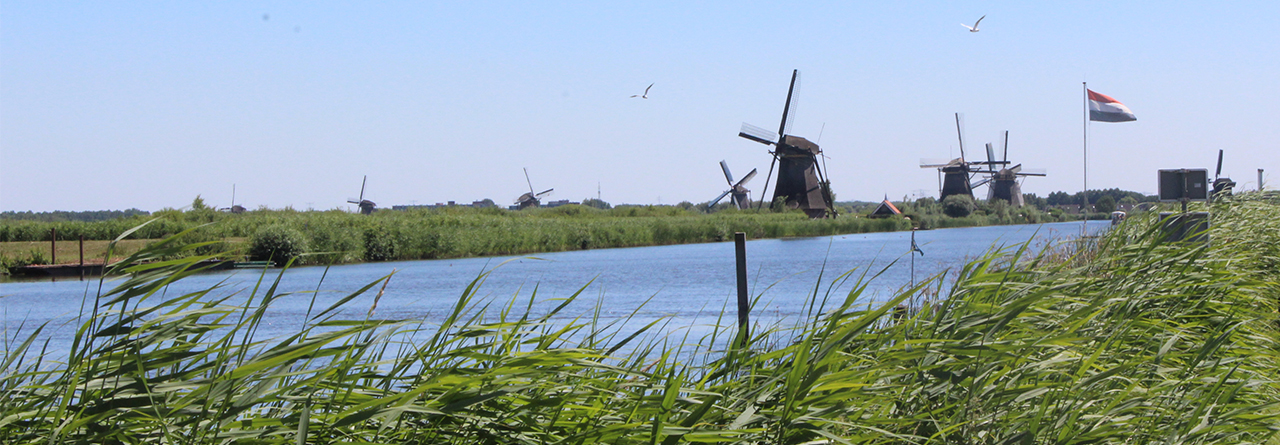




Comments are closed here.